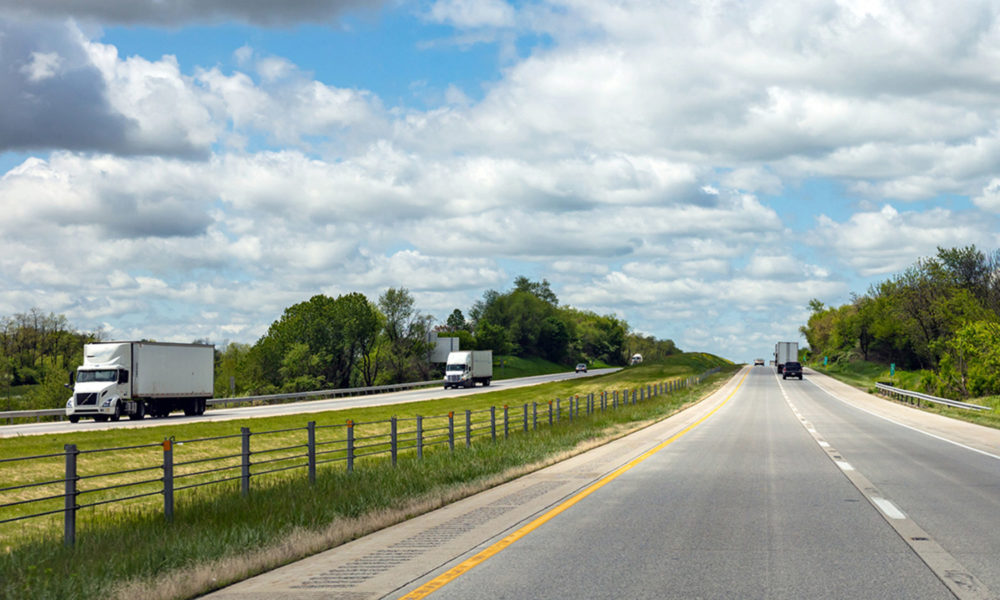Today, EPA Administrator Andrew Wheeler announced an advanced notice of proposed rulemaking (ANPRM) to set more stringent pollution standards on heavy-duty trucks. This follows up on the 2018 announcement of the administration’s “Cleaner Trucks Initiative” and represents the only step thus far the administration has made to actually, you know, do its job and reduce pollution.
What’s next
An ANPRM is just the first step in the process to set stronger pollution standards for trucks, but the evidence is abundantly clear that what we have on the books today is not good enough. The last round of pollution standards was set almost two decades ago, and while the fleet has gotten significantly cleaner as those newer, lower-polluting diesel trucks have phased in, the real-world pollution reductions have not met expectations.
The last round of standards was expected to cut smog-forming emissions from new trucks by 90 percent; however, recent data shows that even the best performing new trucks emit in the real world more than 3 times the levels of pollution required under the current certification tests. The current standards do not adequately capture real-world performance, and as a result, the nearly 20-year-old rules are not yielding the local reductions needed.
It’s also worth pointing out that this positive step is taking place while the administration’s proposal to allow greater sales of highly polluting glider trucks is still on the table, which would significantly undermine any reductions of the “Cleaner Trucks Initiative.”
What’s at stake
Heavy-duty truck pollution is a critical factor in local air quality. In California, diesel trucks represent about one-third of all nitrogen oxide (NOx) smog-forming pollution, and even as newer, cleaner trucks enter the fleet, diesel emissions will continue to be the largest contributor to NOx pollution for the foreseeable future.

Pollution from diesel trucks is concentrated in freight corridors around the country, putting historically disadvantaged communities at risk. (Source: EPA)
But it’s not just California that’s impacted by dirty trucks—freight corridors in the Southeast (e.g., down to Atlanta) and in the Midwest (e.g., through Chicago) are heavily impacted by diesel emissions, leading to increases in both soot and smog as a result of emissions of NOx and particulate matter from diesel trucks.
Communities most at risk from the impacts of such emissions are those that live along these freight corridors or near ports, which have tremendous volumes of truck traffic. While these communities likely have the most to gain from stronger regulations, history has shown that there is no guarantee the federal government is willing to go far enough to protect these communities, since they’ve historically borne the brunt of the health impacts from transportation pollution.
What to look for
Because of its pressing need to address the air quality issues of its inhabitants, California has already been moving forward with setting more stringent pollution requirements for heavy-duty trucks, holding workshops for stakeholder engagement, supporting research on the next generation of pollution controls, and moving forward with complementary policies that advance electric trucks. Other states have echoed the need to move forward with stronger emissions requirements for trucks in light of federal air quality requirements, and state actions to reduce emissions from new trucks will likely go into effect in advance of any federal action.
With states and now EPA moving forward to set stronger requirements for heavy-duty trucks, the key questions for any standards will be 1) will these rules be technologically forcing, as required under the Clean Air Act; 2) will the agencies ensure that reductions on certification tests are matched by real-world reductions; and 3) will these reductions be maximized to protect those communities most currently impacted by truck pollution?
Given the slow turnover in the truck fleet, the lengthy EPA rulemaking process, lead-time restrictions preventing federal implementation until 2026 at the earliest, and a movement already underway towards zero-emission freight, it is possible that the actions undertaken by this administration could be the last set of national pollution standards ever set for diesel-powered trucks—as such, it is critical that this process expedites a transition to a cleaner, more sustainable, and more just freight system as we transition away from fossil fuels.

